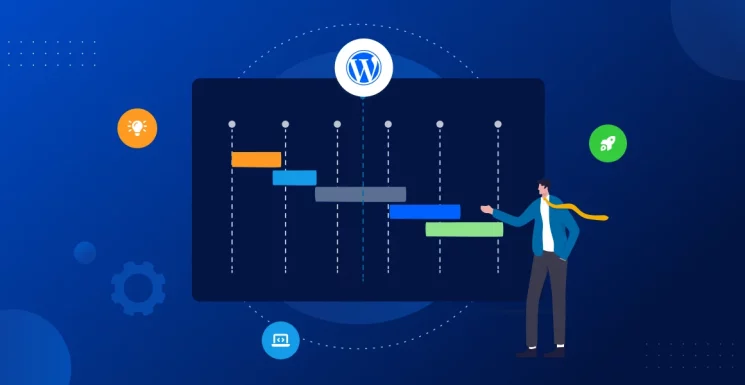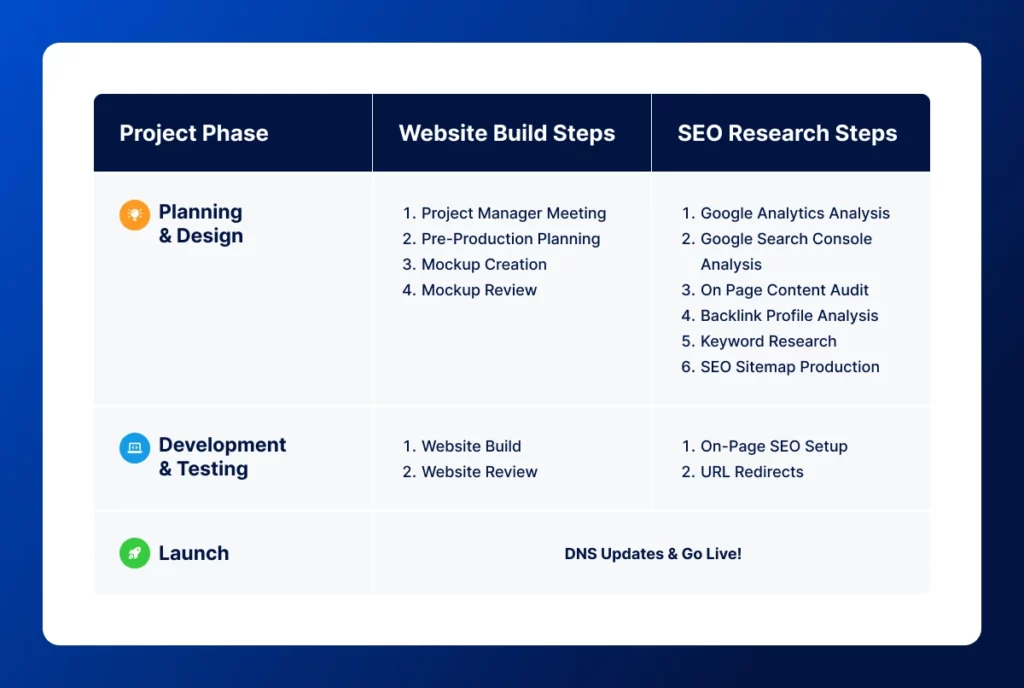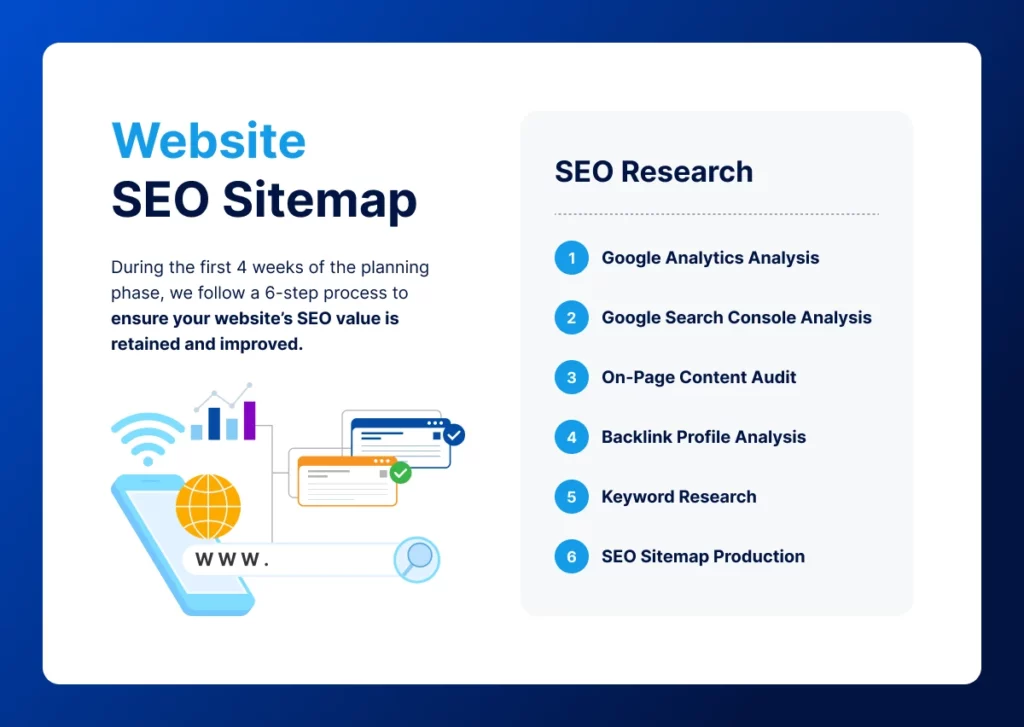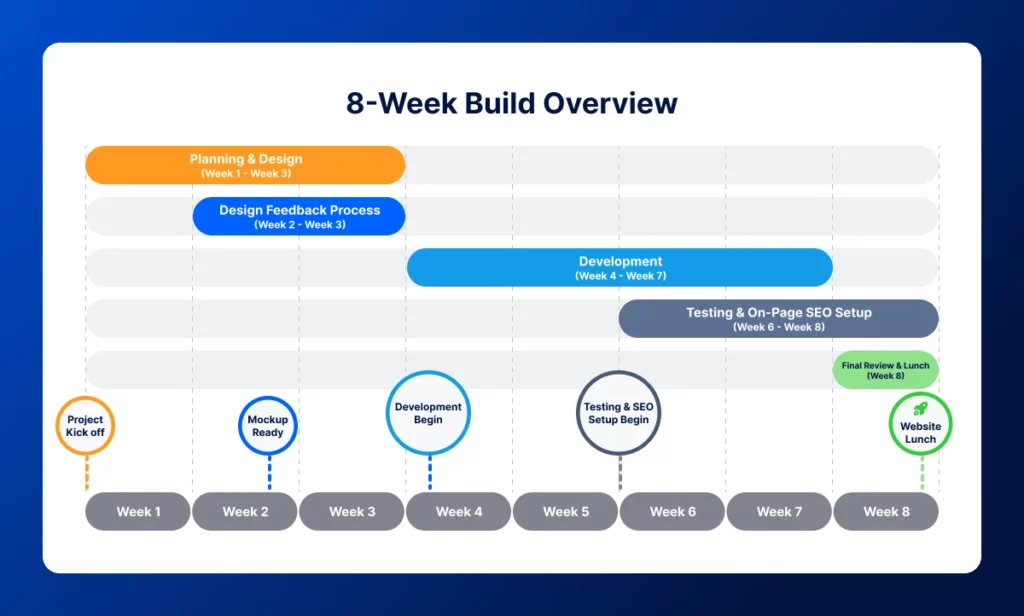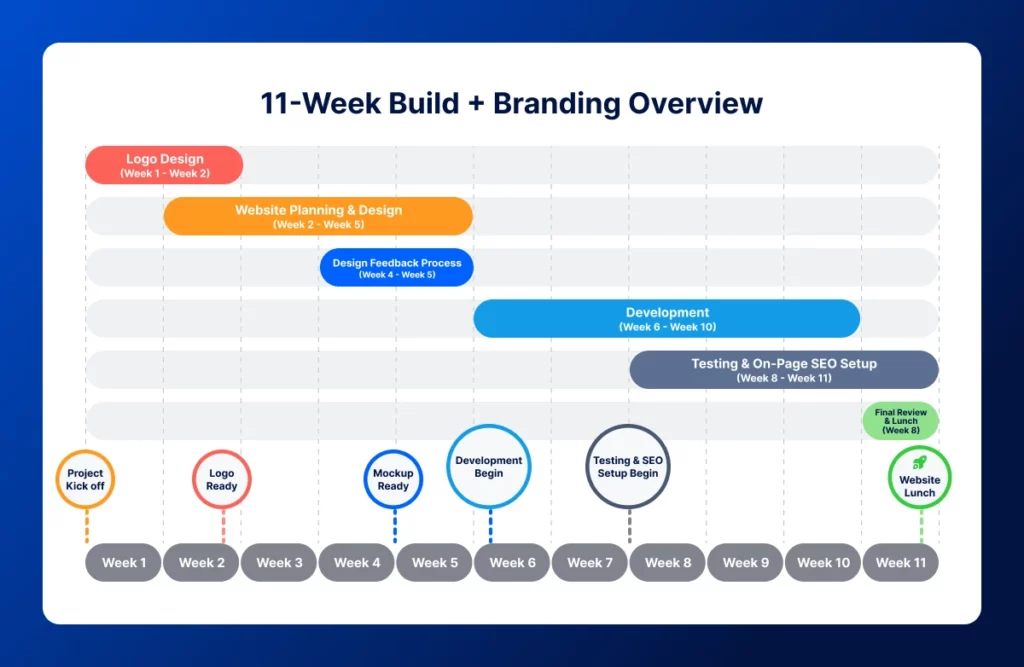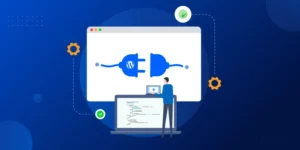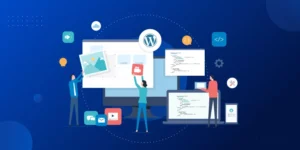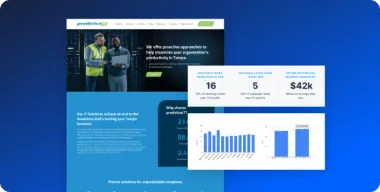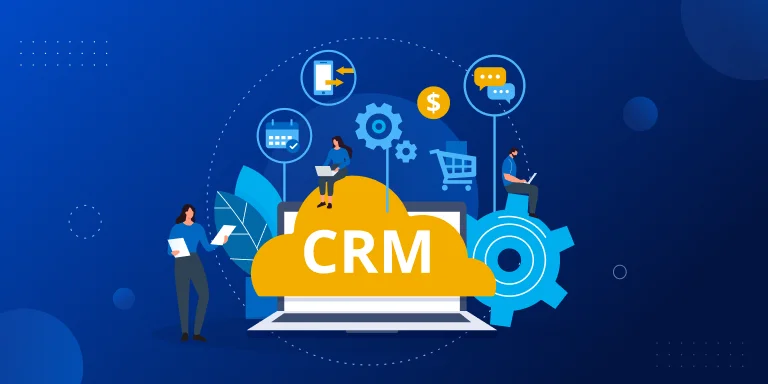One of the questions I hear almost daily is, “Adam, how long will it actually take to build our new WordPress website?”
It’s a great question! You’re investing in a critical business asset, and you naturally want to know when you can expect it to be live and working for you.
The honest answer? It depends. I know, I know – not the most satisfying answer right off the bat!
But stick with me. While there’s no single magic number, understanding the factors involved will give you a much clearer picture and help you plan effectively.
In 2025, building a high-performance website that actually drives results involves much more than just plugging in some text and pictures.
Let’s break down what really goes into a website project and what realistic timelines look like.
It’s More Than Just Clicking “Publish”
Think of building a website like building a house. You wouldn’t expect a custom home to be built in a week, right? There’s planning (blueprints), foundation work, framing, plumbing, electrical, finishing touches, and inspections.
Similarly, a professional website build involves several key stages:
- Strategy & Planning: Defining your goals, understanding your target audience, mapping out the user journey, and planning the site structure.
- Content Creation: Writing compelling copy that speaks to your audience and incorporates SEO keywords. Gathering or creating images and videos. This is often the biggest variable in the timeline and depends heavily on your input!
- Design: Creating wireframes and mockups that reflect your brand and provide a great user experience. This could range from customizing a template to a fully bespoke design.
- Development: Bringing the design to life using WordPress and a page builder (like our go-to, Elementor), setting up essential features, configuring plugins (e.g., for contact forms, SEO, maybe even WooCommerce for online stores or membership features).
- SEO Foundation: Researching keywords, optimizing page titles and descriptions, structuring content logically, ensuring technical SEO basics are covered, and setting up for local SEO success (crucial for many of our MSP and law firm clients in competitive markets!).
- Performance Optimization: Making sure the site loads quickly and runs smoothly on all devices – essential for both user experience and SEO. Check out some of our top WordPress performance tips.
- Quality Assurance (QA): Rigorous testing to catch bugs, check forms, ensure responsiveness across different browsers and screen sizes, and proofread everything. This also includes ensuring basic WordPress security measures are in place.
- Feedback & Revisions: Incorporating your feedback at key stages.
See? It’s quite a process, and each step takes time to do right.
So, How Long Does It Take? Typical Timelines for 2025
Based on the process above, here are some general timelines we see at Pronto:
The Sprint (2-4 Weeks): Template-Based Build
- What it looks like: We start with a pre-designed, high-quality template and customize it with your branding, content, and images.
- Pros: Fastest way to get a professional-looking site online. More budget-friendly.
- Cons: Less room for deep customization. SEO is foundational but less tailored initially. Requires you to have your content ready to go fast.
- Best for: Businesses needing a great-looking site quickly, startups, or those on a tighter initial budget.
The Sweet Spot (5-8 Weeks): Semi-Custom Build
- What it looks like: This allows for more collaboration on design and structure. We can incorporate more specific requirements, dive deeper into keyword research and on-page SEO tailored to your market, and refine the user experience.
- Pros: Good balance of speed, customization, and strategic depth (especially for SEO). Allows time for thoughtful content integration.
- Cons: Requires more involvement and a moderate budget.
- Best for: Most established small businesses looking for a site that truly reflects their brand and is optimized to attract local customers. This is often ideal for our clients in competitive spaces.
The Deep Dive (8+ Weeks): Fully Custom or Complex Build
- What it looks like: Needed for highly unique designs, complex features (like advanced e-commerce solutions with WooCommerce, custom integrations, extensive membership portals), in-depth content strategy implementation, and comprehensive SEO campaigns from the get-go.
- Pros: Results in a highly tailored website perfectly aligned with specific, complex business needs.
- Cons: Takes the longest and requires the largest budget.
- Best for: Businesses with unique functional requirements, specific integration needs, or those aiming for a truly bespoke digital presence.
A Note on Tools: Why We Love Elementor (But Support Others!)
At Pronto, we primarily build using Elementor. Why? It hits a sweet spot: it’s incredibly flexible, allowing for great custom designs and functionality, but it’s also user-friendly, meaning you (or your team) can make basic updates later without needing to be a coding expert. It helps us work efficiently, which translates to better value for you.
That said, the WordPress ecosystem is wonderfully diverse! We know there are other fantastic builders like Gutenberg (WordPress’s native editor), Breakdance, Divi, GeneratePress, and more, each with its strengths. We have experience supporting and maintaining sites built with various tools, so if you’re coming to us with an existing site on a different builder, don’t worry – we’ve got you covered.
Setting Your Project Up for Success
Regardless of the timeline, a few things always help speed the process along smoothly:
- Have Your Content Ready (or a Plan): Knowing what you want to say and having at least draft copy and key images ready is a huge time-saver.
- Provide Timely Feedback: Clear, consolidated feedback at review stages keeps the project moving.
- Understand It’s a Collaboration: We bring the web expertise, but you bring the business knowledge. Working together gets the best results.
Building a great WordPress website is an investment, and the timeline reflects the effort needed to create something that truly serves your business goals. Remember that a website also requires ongoing care, which is where reliable WordPress maintenance services come in.
Whether it’s a quick launch or a more involved custom build, the key is choosing the path that aligns with your specific needs, budget, and timeline expectations.
Got more questions about the process or ready to discuss your project? We’re always here to help provide transparent, practical advice!

